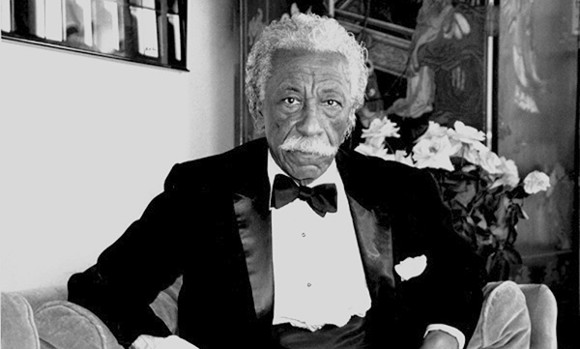
Belonging to Fort Scott, Kansas, Gordon Parks was born on November 30, 1912 to a family whose head was a vegetable farmer. Being black, Parks faced extreme forms of discrimination as a child and was forced to attend a segregated elementary school. His race also prohibited him from active participation in high school activities and the teachers specially discouraged African-American students from acquiring higher education.
Parks left home at the age of 14 after his mother passed away and moved on to live independently after spending a short time living with his relatives. He explored many fields of work in his initial years of adolescence but gradually began to develop interest in photography and bought his first camera at the age of 25. Parks’ fashion photographs as a beginner attracted Marva Louis, boxing champion Joe Louis’s wife, upon whose advice Parks moved to Chicago with his wife in 1940.
Relocating helped Parks explore subjects beyond portraits and fashion photographs and boosted his interest in the low income black individuals residing in Chicago’s South Side. In 1941, the photographer won a fellowship with the Farm Security Administration for his pictures of the inner city. This association saw Parks create some of his most enduring pieces, including American Gothic, Washington, D.C, capturing a member of the FSA cleaning crew in front of an American flag.
After the FSA dissolved, Parks continued to work for the Office of War Information and the Standard Oil Photography Project. Being hired by Vogue magazine, Park served as freelance photographer with a unique style, focusing on the appearance of models and garments in motion, rather than static poses.
Moving to Harlem, Parks continued to work as a photographer for the fashion industry and his photographic essay on a Harlem gang leader won him the position of a staff photographer for the nation’s most circulated photographic publication, LIFE magazine, in 1948. Gordon Parks owned this position for 20 years, capturing images related to fashion, sports and also issues like poverty and racial segregation, along with portraits of famous African Americans like Muhammad Ali.
During the mid-20th century, Parks became involved in writing and released his first publication in 1962 in the form of an autobiography, The Learning Tree. Some of his other writings include A Poet and His Camera, In Love and Glimpses toward Infinity, a combination of fiction and photography based books. Added to his list of publications is also a memoir, A Hungry Heart.
In 1969, serving as the screenplay writer, Parks converted his autobiography into a movie, becoming the first African American to direct a major Hollywood motion picture. His next movie, Shaft, became one of the biggest box-office hits of 1971, inspiring a genre known as Blaxploitation. Its sequel, Shaft’s Big Score, followed soon after but the failure of Leadbelly convinced Parks to stick to television production.
The successful photographer was, however, unable to maintain a similar streak in his personal life and was divorced three times. Father of four, the 93 year old Gordon Parks died of cancer in 2006 and is buried in his hometown, Kansas. He now continues to be remembered through the images he left behind and the influence he had on the photography and television industry.
